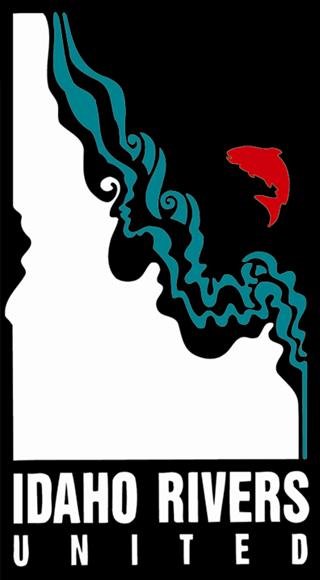Working to Protect Wild and Scenic Values in the Owhyee Canyonlands with Ecoflight
IRU staff and several other organizations and members of the Shoshone-Paiute Tribes recently had the opportunity to tour the Owyhee canyonlands by air, courtesy of Ecoflight. This vast sagebrush steppe and remote river canyon covers parts of Idaho, Nevada, and Oregon and is home to over 600,000 acres of Wilderness and 324 miles of Wild and Scenic rivers.
It is a remarkable place that is under threat due to a proposed expansion of Air Force operations. Overflights as low as 100 feet above ground level and drastically lower supersonic travel would jeopardize the wildlife and character of the Owyhee, including the values of its Wild and Scenic river systems.
The EcoFlight first took us over the mountainous Jarbidge-Bruneau headwaters in Nevada, home to the southernmost population of the endangered bull trout, which ranges lower down into the Wild and Scenic stretch of the river. The fishery value of the Jarbidge River is one of many outstandingly remarkable values (ORVs) that serve as criteria for a particular river’s designation into the Wild and Scenic system.
Designated Wild and Scenic rivers must be managed to maintain their ORVs, which can be scenic, recreational, geologic, wildlife, fisheries, and cultural/historical. Importantly, rivers deemed eligible for future designation must also be similarly managed. Incredible stretches of eligible river in Oregon and Nevada, not yet Wild and Scenic, face a real threat of degradation due to the Air Force’s proposed plan.
Flying over this incredible landscape, it was clear how unique and remote this area is. Each Wild and Scenic river in the Owyhee possesses characteristics in virtually all outstandingly remarkable value categories, a rare staus that signifies how special these rivers are.
The plane then arced westward, high above the Owyhee River canyon and its many tributaries, consisting of hundreds of miles designated as Wild and Scenic. Wild and Scenic rivers in Idaho already have their ORVs degraded by low and loud military overflights under current operations.
Intense noise disturbance and disruption from low-flying jets and sonic booms shatter the solitude that makes the Owyhees special. It also impacts wildlife in ways that are poorly understood. In reviewing the Air Force's proposed plan, it was clear that these impacts were severely understudied. The environmental impacts of current operations, and those associated with the proposed overflight expansions, need to be more thoroughly studied. Additionally, Wild and Scenic status affords non-negotiable federal protections for these rivers, and proposed management must ensure that ORVs are not impacted by operations.
Use your voice and submit a public comment on behalf of the Owyhee and its incredible river canyons by October 25th!
For a deeper dive into the issue, click here.

